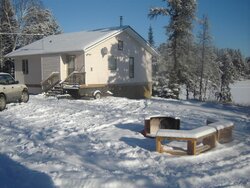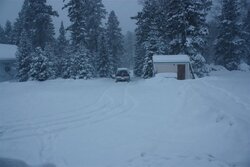Nope, can't go upstairs either. All my plumbing goes through the basement so i have to keep the basement heated all winter and I've just put a hole in my masonry block wall...
Perhaps in an ideal world i could have a stove on in both the basement and main floor but that's not likely to happen
Perhaps in an ideal world i could have a stove on in both the basement and main floor but that's not likely to happen


 I just didn't want grief if the insurance company got as look; I would claim I boght it like that).
I just didn't want grief if the insurance company got as look; I would claim I boght it like that). 

 August! That looks like January here.
August! That looks like January here.